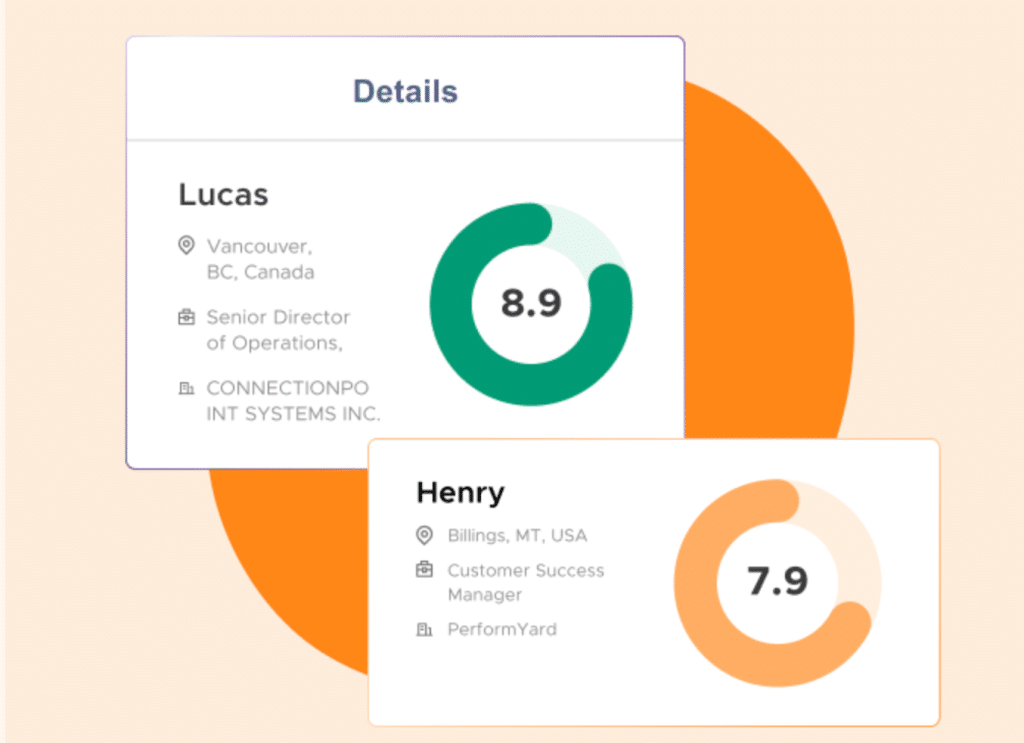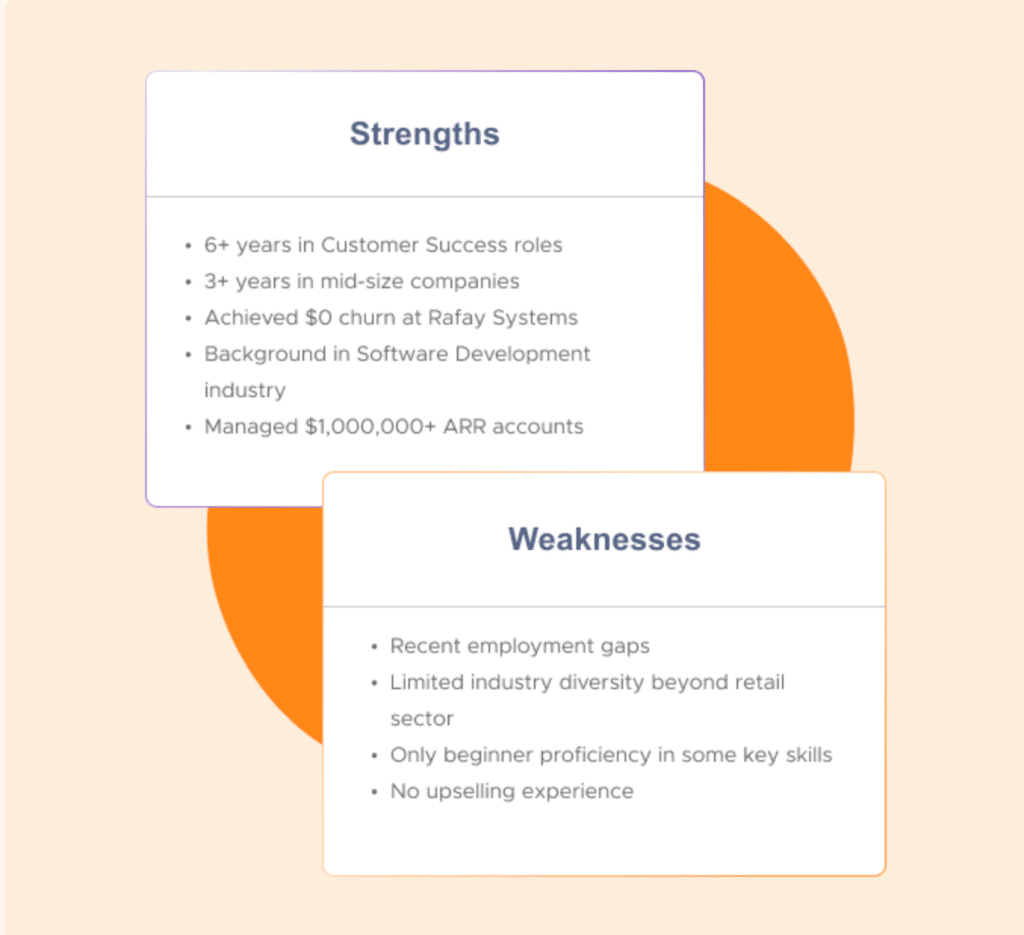Every day a position stays open costs your company money, momentum, and morale.
Traditional recruitment methods fall short in this fierce talent market. While you recognize the need to evolve hiring approaches for modern professionals, keeping pace with changing candidate expectations feels like an uphill battle.
The impact of prolonged vacancies extends far beyond empty desks. Projects lose momentum, operational costs climb, and teams strain under increasing workloads. Without a more efficient recruitment strategy, your top candidates will choose competitors – creating a cycle that’s hard to break.
But there’s a powerful solution emerging: AI-driven recruitment. These innovative tools are reshaping how organizations identify, engage, and secure exceptional talent.
In this blog, we’ll walk you through practical strategies to improve recruiting efficiency and meet the demands of today’s competitive talent market.
But First, Are We Aligned on What is Recruiting Efficiency?
Recruiting efficiency refers to the ability to attract, evaluate, and onboard the best talent in the shortest possible time with minimal resource expenditure. It measures how effectively your organization can fill open roles with high-quality candidates.
Efficient recruiting is finding the right talent that aligns with a company’s needs while optimizing costs and minimizing delays.
Example of efficient recruiting
Imagine a mid-sized tech company that needs to hire a skilled software engineer. Using an efficient recruitment process:
- The company posts a detailed job listing on the right platforms to attract relevant candidates.
- AI recruitment tools quickly scan resumes and shortlist the most qualified applicants.
| 😃Fun fact: With the Peoplebox.ai’s AI resume screening tool, you can reduce your applicant review time by 90%, thus speeding up your hiring process. |
- Pre-screening assessments and automated interview scheduling save hours of manual effort.
- The hiring team focuses on conducting meaningful interviews with top candidates.
- Within three weeks, they hired an ideal candidate who fit the role, culture, and expectations.
This streamlined hiring process saves time, reduces hiring costs, and enhances the candidate experience, showcasing what efficient recruiting should look like.
How Can You Ensure Recruiting Efficiency?
Looking to transform your hiring process? Here are five proven strategies that combine traditional wisdom with modern AI capabilities to help you build stronger teams faster:
1. Automate Resume Screening to Save Time
Manually reviewing every application slows down hiring and risks missing great candidates. AI tools can instantly scan resumes, highlighting those that match your required skills, experience, and qualifications. This cuts down manual review time and ensures you start with the most relevant candidates.
Quick Tip: Set AI filters to focus on skills and experience, not just job titles or degrees, to avoid excluding qualified candidates.
2. Use AI-Powered Candidate Sourcing to Expand Your Reach
Relying only on job boards limits your talent pool. AI sourcing tools can scan multiple platforms, professional networks, and even passive talent databases to uncover high-quality candidates you wouldn’t have found otherwise.
Quick Tip: Use AI to source talent from diverse backgrounds by removing unnecessary filters that limit search results.
3. Prioritize Skills Over Keywords
Traditional ATS systems often reject candidates based on exact keyword matches, causing you to miss out on talented people. Modern AI tools can analyze skills contextually, ensuring candidates are considered for their true capabilities, not just matching words on a resume.
Quick Tip: Configure your ATS to identify transferable skills for roles where direct experience might be harder to find.
4. Build a Structured Talent Pipeline
Recruitment doesn’t have to start from scratch every time a role opens. Create a talent pool with pre-screened candidates who fit common roles. AI can help track, score, and engage this pipeline so you can fill roles faster when positions open up.
Quick Tip: Keep passive candidates warm with occasional updates about your company’s achievements and culture.
5. Standardize Your Interview Process with AI Tools
Inconsistent interviews can lead to biased decisions and inefficient hiring. Standardize your interviews using AI tools that generate role-specific questions and scoring templates, ensuring every candidate is assessed fairly and on the same criteria.
Quick Tip: Use AI to generate structured interview questions based on the job description and required competencies.
6. Minimize Unconscious Bias with Anonymized Screening
Unconscious bias can creep into hiring decisions even when unintentional. AI tools can anonymize applications by hiding personal details like names, photos, and educational institutions, ensuring candidates are evaluated purely on their qualifications.
Quick Tip: Use bias detection features in modern ATS tools to identify language patterns in job posts that may deter diverse candidates.
7. Improve Collaboration Between Recruiters and Hiring Managers
Poor communication between hiring teams can slow decision-making. Use collaborative hiring platforms where recruiters and hiring managers can share feedback, rate candidates, and track hiring progress in real time.
Quick Tip: Set clear decision deadlines within your hiring platform to keep everyone on track.
8. Use AI to Track and Optimize Key Hiring Metrics
You can’t improve efficiency without data. AI tools can track critical metrics like time-to-fill, source quality, cost-per-hire, and candidate drop-off rates. This data helps identify bottlenecks and areas for improvement.
Quick Tip: Review your hiring metrics monthly and adjust sourcing strategies if quality or speed drops.
9. Simplify Job Descriptions for Clarity and Reach
Overly complex or vague job descriptions can deter qualified candidates. Use AI tools to refine job posts, making them clear, engaging, and focused on must-have skills while avoiding jargon or unnecessary requirements.
Quick Tip: List essential skills separately from “nice-to-have” skills to avoid discouraging candidates from applying.
10. Streamline Candidate Communication with Automated Messaging
Slow communication can lead to candidate drop-off. Use AI tools for faster interview scheduling, follow-ups, and status updates, keeping candidates informed throughout the process.
Quick Tip: Automate interview scheduling with tools that sync with hiring managers’ calendars.
11. Identify and Reduce Hiring Bottlenecks
Long decision-making cycles, unclear role requirements, or overcomplicated screening steps can all slow down hiring. Use AI-driven workflow analysis tools to spot and fix these issues.
Quick Tip: Set standard timelines for each hiring stage and track delays using your ATS.
12. Focus on Candidate Experience for Long-Term Success
A poor hiring experience can drive candidates away—even top talent. Use AI tools to gather feedback after each stage and adjust your process to create a smoother, more transparent experience.
Quick Tip: Use candidate satisfaction surveys after interviews and measure Net Promoter Score (NPS) for insights.
What are Some Metrics Used to Measure Recruiting Efficiency?
Measuring recruiting efficiency is essential for optimizing your hiring process and ensuring the effective allocation of resources. Here are some key metrics to consider:
- Time to fill: This metric tracks the duration from when a job is posted, and the interview process happens to when a candidate accepts the offer. It helps assess the speed of your recruitment process and identify potential bottlenecks.
- Time to hire: Similar to Time to Fill, this measures the period from when a candidate enters the pipeline to their acceptance of the job offer, providing insights into the efficiency of your selection stages.
- Application completion rate: This evaluates the percentage of candidates who complete the application process after starting it, indicating the user-friendliness of your application system.
- Offer acceptance rate: The ratio of job offers accepted to those extended reflects the attractiveness of your offers and the effectiveness of your candidate engagement.
- Quality of hire: Assesses the performance and retention of new hires, providing insight into the effectiveness of your recruitment strategies in selecting suitable candidates.
- Turnover rate: Measures the rate at which employees leave your organization, highlighting potential issues in recruitment processes.
- Cost per hire: Calculates the expenses of hiring a new employee, aiding in budget management and identifying cost-saving opportunities.
- Candidate experience (Net Promoter Score): Gauges candidate satisfaction with your recruitment process, offering insights for improving the recruitment experience.
How Can You Improve Recruiting Efficiency with Peoplebox.ai?
Peoplebox.ai offers enterprise-grade candidate screening software that helps human recruiters streamline the hiring process, performance management, goal alignment, and career development by automating skill-gap analysis and matching talent to the right roles. This helps companies achieve bigger goals.
Peoplebox.ai uses AI recruitment tools such as resume screening that quickly filter out unqualified candidates and focus on those who match the job criteria.
It also scores candidates based on their strengths and skill gaps. When combined with human recruiters, it can shortlist candidates to help you prioritize the most relevant candidates without manually sorting through every resume.

The platform analyzes performance data to find the best cultural and role fit for the company. These talent insights reduce the risk of misalignment and improve hiring accuracy.
For example, the AI resume screening tool presents the strengths and weaknesses of a candidate for a customer success role.

Our AI resume screening tool is designed to handle the recruitment process and talent acquisition for large applications. It effortlessly tags and organizes rejected resumes in your ATS so you can save them for future roles. Also, it matches profiles with all open positions, so you can quickly find the best fit for each role.







